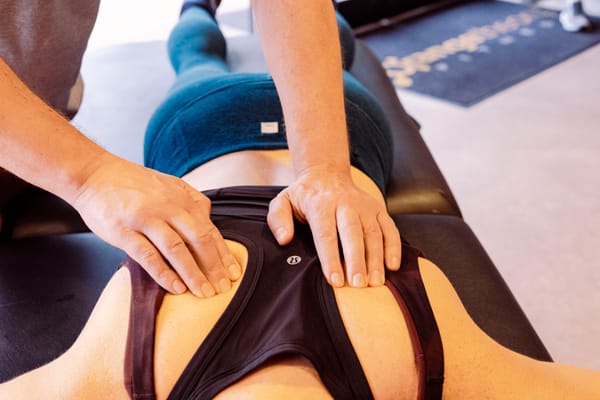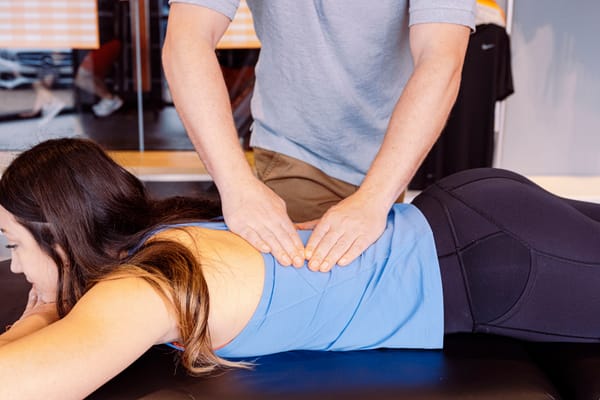
Headache Pain Relief - Massage Austin
We embrace the understanding that headaches, in their various forms, can significantly impact the quality of life.
Headache Types
- Tension Headache: A tension headache is commonly characterized by pain in any head region, often described as throbbing, constant, sharp, or dull pressure. The pain can vary in intensity and duration and is accompanied by other symptoms such as sensitivity to light and sound, nausea, or visual disturbances.
- Migraines: Migraine headaches are often intense and throbbing, usually affecting one side of the head. They are frequently accompanied by other symptoms like sensitivity to light and sound, nausea, and visual disturbances known as auras. Migraines are typically more severe than regular headaches and can last a few hours to several days.
- Cluster Headache: Cluster headaches are excruciating and occur in cyclical patterns or clusters. The pain is usually concentrated around one eye or one side of the head and can be accompanied by symptoms like redness of the eye, nasal congestion, or facial sweating. These rare headaches are known for their sudden onset and short but intensely painful episodes.
- Chronic Headaches: Typically manifesting as a persistent, dull ache in the head, chronic headaches can vary in severity. Unlike migraines or cluster headaches, they generally don't present with additional symptoms. Often stemming from factors like ongoing tension, persistent stress, or chronic dehydration, these headaches usually impact both sides of the head and can be a recurrent issue for many individuals.
What Causes a Headache?
Headaches can arise from a multitude of factors, both internal and external. Common causes include stress, dehydration, poor posture, lack of sleep, and dietary triggers like caffeine or alcohol. Specific medical conditions such as sinus infections, influenza, and hypertension are also known to trigger headaches.
Among the less commonly acknowledged triggers are teeth clenching and grinding, actions often associated with stress or anxiety. These can lead to temporomandibular joint (TMJ) syndrome, which affects the jaw joint and chewing muscles. It causes a headache that is felt as pain in the jaw joint or temple.
Another related condition, thoracic outlet syndrome (TOS), occurs when blood vessels or nerves in the space between the collarbone and the first rib (thoracic outlet) are compressed, leading to shoulder and neck pain and numbness in the fingers.
This syndrome can sometimes mimic or contribute to headache symptoms due to the interconnectedness of the neck and shoulder muscles to those of the head. Activities that involve repetitive motion or poor ergonomic setups can exacerbate TOS, leading to tension headaches.
Both TMJ syndrome and thoracic outlet syndrome highlight the complex interplay between muscle tension, nerve compression, and the skeletal system in the genesis of headache pain, emphasizing the importance of a holistic approach to treatment.
Focusing on the intricate relationships between muscle tension, nerve compression, and joint health, Iler Method® Therapy employs specialized techniques to release trigger points, improve blood flow, and restore proper body mechanics. Tailored specifically to each individual's needs, the Iler Method effectively alleviates pain associated with tension headaches, migraines, TMJ syndrome, and thoracic outlet syndrome.
Skilled Massage Therapists
To uphold our commitment to excellence, every therapist undergoes an advanced training program tailored to the Iler Method®, culminating in certification in Austin, Texas. Our program ensures our team is proficient in advanced techniques for effectively treating headache pain, guaranteeing our clients receive personalized and effective care.
Our Massage therapists use trigger point therapy to treat a broad spectrum of headaches. We embrace the understanding that headaches, in their various forms, can significantly impact the quality of life. Our Iler Method® massage therapy addresses the specific needs of individuals experiencing headache pain.
Our therapists use specialized trigger point techniques to effectively release trigger points and adhesions, improving blood flow and alleviating headache symptoms. We offer targeted pain management by focusing on key areas of tension, such as the neck, shoulders, and head—common sites of headache triggers.
Relieving Pain with Iler Method Techniques
Incorporating the Iler Method® theories, our therapists, backed by years of experience, utilize uniquely effective medical massage techniques to address pain associated with severe headaches and chronic conditions. These methods seamlessly integrate into the client's daily routine, promoting a pain-free lifestyle. Through deep relief strategies, our therapists ensure comprehensive care for lasting wellness.
These specialized techniques, integral to the Iler Method®, emphasize the importance of a systemic view in therapeutic practices. They ensure a comprehensive treatment strategy beyond superficial symptom relief to tackle the root causes of headache-related pain.
Ring and Middle Finger Together—This technique is particularly effective for clients experiencing chronic migraines linked to neck pain. By targeting the upper neck muscles, specifically the Sternocleidomastoid and Scales, therapists can precisely manipulate these areas using a combination of curved and flexed fingers to apply firm pressure.
This deep tissue massage approach is crucial for releasing muscle tension, which is often responsible for neck discomfort and stiffness, which can contribute to headaches. Utilizing this technique not only eases muscle tension but also helps reduce headache pain, improve range of motion, and address referred pain from these key neck muscles.
Hand and Fingers over Fingers - One hand is stacked over the other, which is highly beneficial for clients suffering from headaches associated with neck tension. This method allows therapists to consistently pressure crucial neck muscles like the Trapezius and Teres major and minor.
By amplifying and evenly distributing the pressure, this technique ensures a focused and effective treatment, reaching deeper muscle layers and addressing pressure points that often contribute to headaches. Such targeted pressure alleviates neck stiffness and reduces the frequency and intensity of headache pain.
Thumb Over Thumb—This method involves overlapping one thumb pad over the other and is highly effective for clients with headaches stemming from neck tension. It mainly targets deep trigger points in the jaw, upper trapezius, Teres major, and Teres minor.
By exerting precise, deep pressure, this neck massage technique reaches dense muscle tissues, helping to restore blood flow and alleviate muscle knots. This focused force is essential in reducing pain and enhancing neck mobility, significantly reducing headache symptoms.
Massage Therapy with a Holistic Approach
Initial Assessment: This phase is crucial for assessing how specific muscle dysfunctions contribute to headache pain, focusing on overcompensated muscles. The therapist identifies trigger points and adhesions that cause discomfort through detailed analysis. The goal is to target immediate areas of pain, understand targets immediate areas of pain, and begin correcting muscular imbalances linked to headaches, laying the groundwork for targeted treatment.
Treatment: Tailored and progressive, treatment starts by addressing the primary sites of headache-related discomfort with specific massage techniques. It then expands to treat compensating muscle groups, ensuring a holistic approach to alleviating headache pain. This strategy targets immediate areas of pain and addresses the broader muscle network involved, facilitating a shift from acute care to comprehensive, headache-focused maintenance.
Maintenance: Aimed at preserving the benefits gained from the initial intensive treatment of headaches, maintenance sessions are less frequent yet crucial for ongoing care. These appointments focus on sustaining muscle health, preventing headache recurrence, targeting immediate areas of pain, tackling new symptoms, and ensuring enduring relief and continued muscular well-being through the Iler Method®.
Final Thoughts: Pain Relief for Headaches
At Iler Method®, we empathize deeply with the pain and discomfort that headaches bring. Our unique massage therapy provides relief and a path to long-term wellness. We understand migraines are more than just headaches; they're complex neurological events.
That's why our skilled therapists focus on easing tension in critical areas like your neck, shoulders, and head, which often contributes to triggering headache pain. Our approach goes beyond temporary fixes. We aim to reduce the likelihood of future episodes, offering personalized care to help you find lasting relief from headache pain.
Trust us to be your partners in managing and overcoming this challenging condition. We will guide you toward a life with less pain so you can get back to doing the things you love.
Headache Pain Relief: FAQs
What kind of massage is best for headaches?
Deep tissue massage, mainly focusing on trigger points, is considered one of the most effective types of massage for alleviating headaches.
What pressure point relieves headaches?
The suboccipital pressure point, located at the base of the skull, is highly effective for relieving headaches. Applying pressure to this area can help relax tight muscles, alleviate tension in key body areas, and soothe muscle tissue that often contributes to constant pain. This technique is particularly beneficial for those who regularly experience intense headaches, offering a targeted approach to manage and reduce their symptoms.
Should you massage your head if you have a headache?
Yes, gently massaging your head, mainly focusing on the temples and the base of the skull, can help ease headache symptoms.
What is a trigger point therapy for headaches?
Trigger point therapy for headaches involves applying focused pressure to specific tender neck, shoulders, and head areas to release tension and reduce pain. This technique targets muscular knots often linked to symptoms, improving blood flow and healing.




